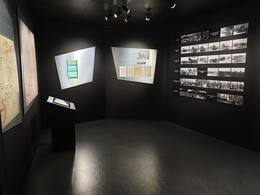Edgaro Auninio, skridusio lėktuvu, prisiminimai apie Antrojo pasaulinio karo pabaigą Ezerės ežere
Ištrauka iš oro kapituliatoriaus Edgaro Aunino atsiminimų apie Kuržemės kapituliaciją 1945 m. gegužę
„...Gegužės 9-osios vakarą įėjome į didelio namo kiemą, kur priekyje jau ėjo pusbūrys rusų fronto kareivių. Nebuvo jokio signalizacijos. Parodėme tuščias kišenes ir pasiūlėme ištuštinti mūsų jūreivių krepšius. To pakako. Leitenantas numojo ranka. Tarp rusų kareivių daugiausia buvo pagyvenę vyrai, kurie su šiokia tokia nuostaba stebėjo ir klausinėjo mus. Su mumis buvo Ivanas Klementjevas iš Kraslavo. Geresnio vertėjo ir prašyti negalėjome. Nakvojome visi kartu dideliame šeimos kambaryje. Apsikeitėme konservais – jiems davėme vokiškų, jie – amerikietiškų. Visi kartu išgėrėme dvi taures degtinės: vieną visiems žuvusiems kare, o kitą – visiems gyviems karo dalyviams. Nuo to laiko niekada neatsisakysiu išgerti šių dviejų taurių gegužės 8 ar 9 dieną visą likusį gyvenimą. Ir noriu pabrėžti: tarp pilkųjų fronto kareivių nebuvo jokios neapykantos!“
paskelbta žurnale „Illustrated History“, 2015 m. gegužės mėn. numeryje
Susijusi laiko juosta
Susijusios temos
Susijusios vietos
Ezerės kraštotyros saugykla „Muitas Nams“
Ezerės muitinė yra Ezerėje, netoli Saldaus-Mažeikių plento, Latvijos ir Lietuvos pasienyje. 1945 m. gegužės 8 d. šiame pastate buvo pasirašytas vadinamojoje „Kuršo kišenėje“ apsuptų Vokietijos armijos dalinių „Kurzeme“ (Kurlandas) kapituliacijos aktas. Manoma, kad Antrasis pasaulinis karas iš tikrųjų baigėsi Ezerėje. Muitinėje yra ekspozicija, kurioje aprašomi Antrojo pasaulinio karo pabaigos įvykiai, ir eksponatai, kuriuose išsamiai aprašoma Ezerės parapijos istorija nuo seniausių laikų iki šių dienų. 1945 m. gegužės 7 d. rytą Leningrado fronto vadas maršalas L. Govorovas išsiuntė armijų grupės „Kurzeme“ vadovybei ultimatumą sudėti ginklus. Kapituliacijos aktą susijusios šalys pasirašė gegužės 8 d., jame išsamiai aprašyta perdavimo tvarka, ginklų surinkimo punktai, pateiktini dokumentai ir informacija bei kitos praktinės priemonės.






